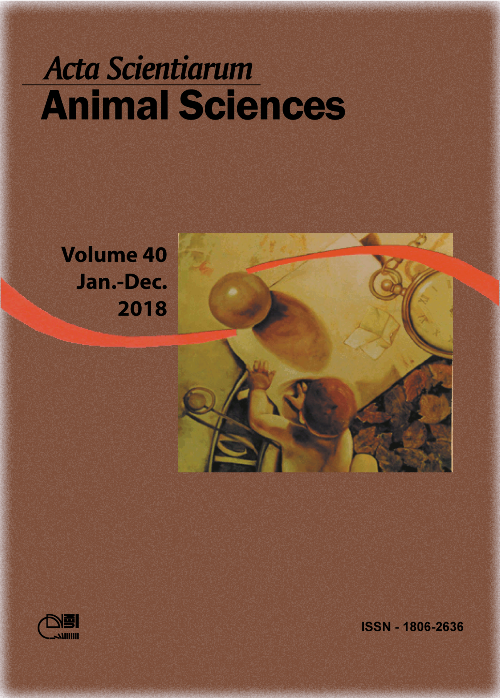<b>Genetic components of birth weight of texel sheep reared in extensive system
Resumo
This study aimed to estimate the components of (co)variance, genetic and phenotypic parameters and trends for birth weight. We used 783 birth weight records, between 2012 to 2016, of Texel sheep reared in extensive system. The components of (co)variance and the genetic parameters were estimated using six different animal models, using the restricted maximum likelihood method (REML). The model that best fit the data was Model 3, with estimates of direct additive genetic variance of 0.004, maternal permanent environment variance of 0.164, heritability coefficient of 0.011 and phenotypic variation attributed to the maternal permanent environment of 0.394. For the genetic trend, we observed a genetic gain of 0.413% and for the phenotypic trend, a phenotypic gain of 0.159 kg, between 2012 and 2016 were found. Estimates of direct heritability and proportion of the phenotypic variance explained by the maternal permanent environment presented lower and higher values, respectively, in comparison to other studies. For trends, both genetic and phenotypic, there were gains in birth weight between 2012 and 2016.
Downloads
DECLARAÇÃO DE ORIGINALIDADE E DIREITOS AUTORAIS
Declaro que o presente artigo é original, não tendo sido submetido à publicação em qualquer outro periódico nacional ou internacional, quer seja em parte ou em sua totalidade.
Os direitos autorais pertencem exclusivamente aos autores. Os direitos de licenciamento utilizados pelo periódico é a licença Creative Commons Attribution 4.0 (CC BY 4.0): são permitidos o compartilhamento (cópia e distribuição do material em qualqer meio ou formato) e adaptação (remix, transformação e criação de material a partir do conteúdo assim licenciado para quaisquer fins, inclusive comerciais.
Recomenda-se a leitura desse link para maiores informações sobre o tema: fornecimento de créditos e referências de forma correta, entre outros detalhes cruciais para uso adequado do material licenciado.








































